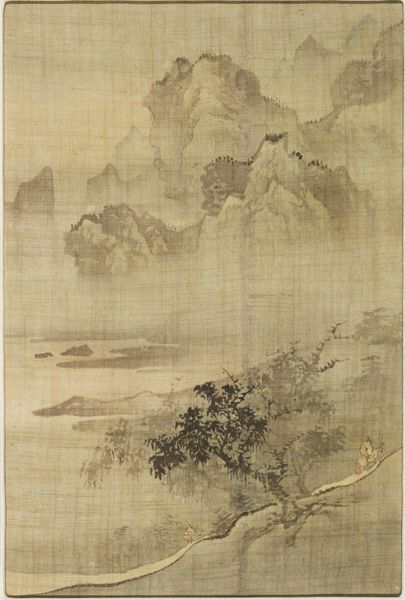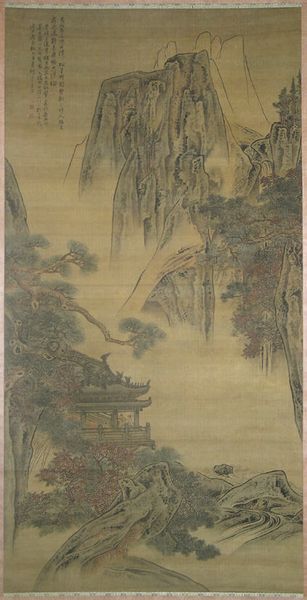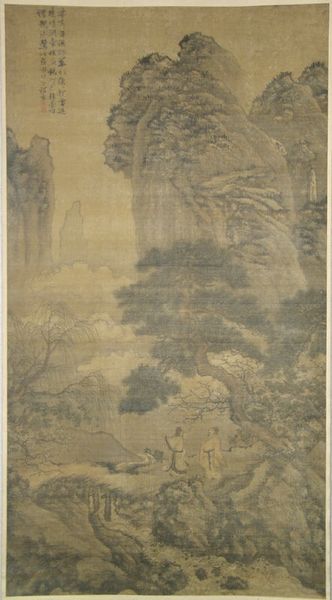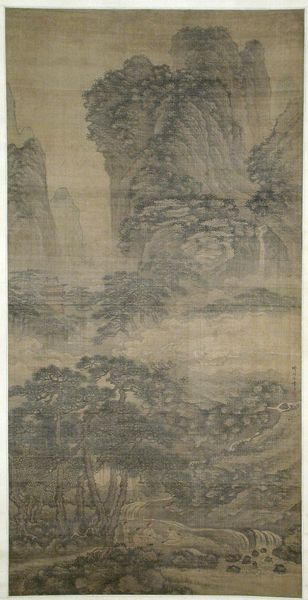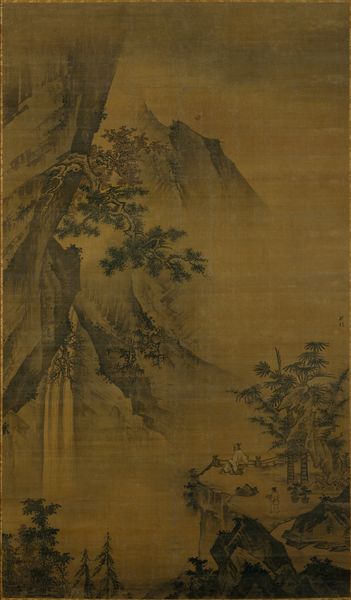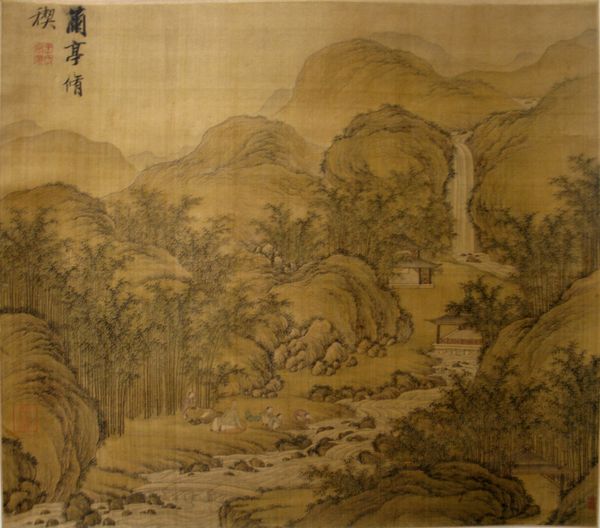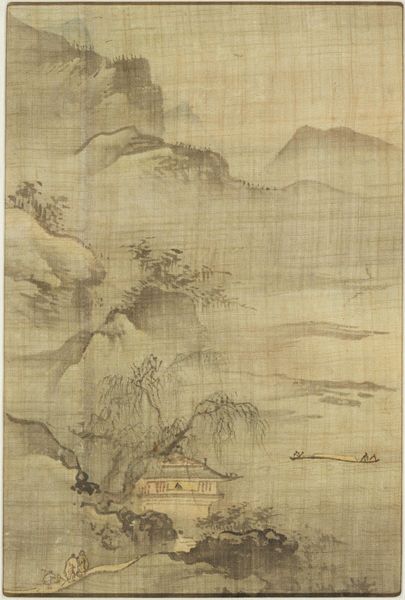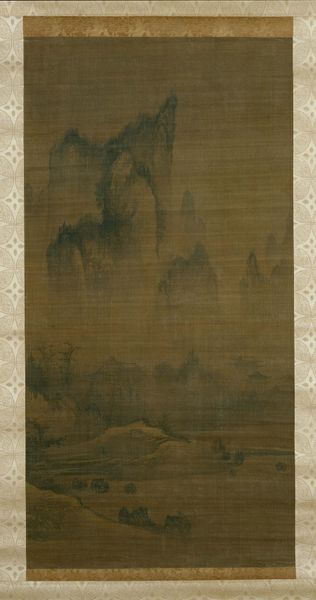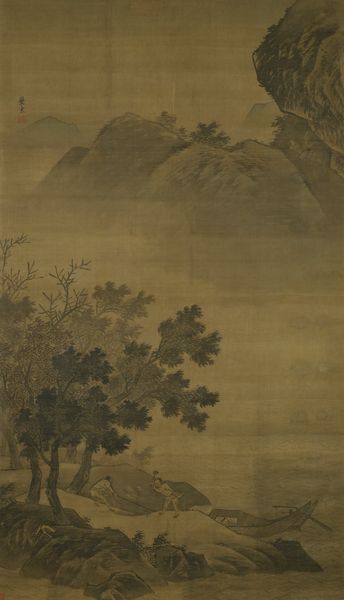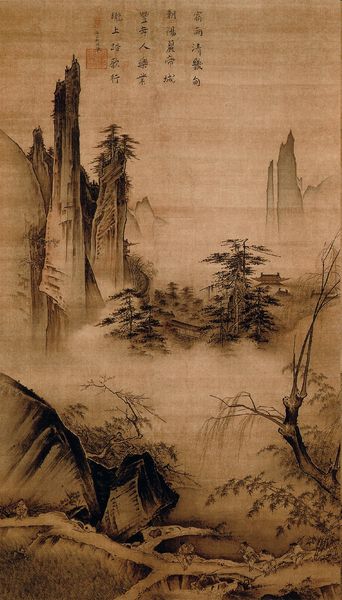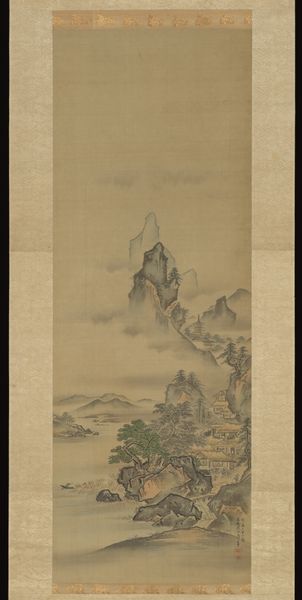
painting, ink
#
ink painting
#
painting
#
asian-art
#
landscape
#
22_ming-dynasty-1368-1644
#
ink
#
mountain
#
china
Dimensions: Image: 72 3/4 x 35 3/4 in. (184.8 x 90.8 cm) Overall with mounting: 98 3/4 x 43 1/8 in. (250.8 x 109.5 cm) Overall with knobs: 98 3/4 x 46 3/8 in. (250.8 x 117.8 cm)
Copyright: Public Domain
Editor: Here we have Lan Ying's "Hermit-Fisherman on a Spring River" from 1632, an ink painting currently residing at the Met. It's lovely. The muted colors give it a dreamlike quality, almost as if the landscape itself is fading into memory. What can you tell me about this work? Curator: Well, let's start by thinking about the materiality. Consider the rice paper. Its absorbency dictated Lan Ying's technique. Every brushstroke mattered. It wasn’t just about depicting mountains and water; it was about the artist's mastery of ink and his ability to harness its inherent qualities. Editor: So, it’s the way he manipulated the material itself that is really interesting. Curator: Precisely. Now, think about the social context. Why this landscape? What purpose did it serve? During the late Ming Dynasty, literati painters often depicted reclusive scholars or fishermen as a commentary on social or political turmoil. Escapism, perhaps? But more importantly, who was consuming art like this, and how did their own social positions influence the painting? Editor: I see. It’s like the landscape becomes a site of resistance, or at least a symbolic retreat from the realities of the time. So, understanding the materials used and who might commission and consume it unlocks other interpretations of the message the artist is trying to send? Curator: Exactly. And understanding that Ming dynasty landscapes, while seemingly timeless, are inextricably linked to the social realities and material conditions of their production allows us to deconstruct the myth of art existing in a vacuum. The act of making, distributing, and consuming these images says so much more than just what they visually represent. Editor: That really shifts my perspective. Thanks! Curator: My pleasure. It's important to look at everything: materials, processes, and how that interacts with a wider audience. It opens up whole new avenues for interpretation, doesn't it?
Comments
No comments
Be the first to comment and join the conversation on the ultimate creative platform.
